The Global X Nasdaq 100 Covered Call ETF (QYLD) is designed to offer investors with potential monthly income while seeking to lower the risks of investing in a major US index through a strategy that writes monthly covered call options on the Nasdaq 100 Index.
QYLD’s covered call position is created by buying (or owning) the stocks in the Nasdaq 100 Index (NDX) and selling a monthly at-the-money index call option. An option is a contract sold by one party to another that gives the buyer the right, but not the obligation, to buy (call) or sell (put) a stock at an agreed upon price (strike price) within a certain period or on a specific date. In return for the sale of the call option, the fund receives a premium, which can potentially provide income in sideways markets and limited protection in declining markets. However, the fund gives up that profit potential if the index rises above the strike price of the index call option.
QYLD’s Covered Call-Writing Process:
- QYLD buys all the equities in the Nasdaq 100 Index
- QYLD then sells Nasdaq 100 Index options (NDX) to a counterparty that will expire in one month
- A premium is received in exchange for the sale of the index options
- At the end of the month, QYLD seeks to distribute a portion of the income from writing/selling the NDX index option to the ETF shareholders
- At the beginning of each new month this process is repeated
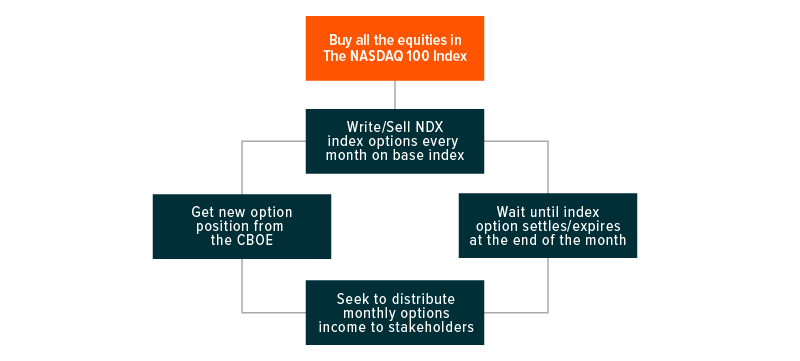
Index Options Basics
- Expire at the end of the month
- Unlike single stock options that can be exercised at any time, index options cannot be called/exercised early
- Settle in cash, not in delivering the underlying index holdings
- Higher index volatility can lead to larger premiums
- If there are gains from writing calls, they are taxed at 60% long term capital gains rates and 40% short term capital gains
Since the index options cannot be called early, it only matters where the index finishes for the month. Prior to expiration, all market swings that take place throughout the month don’t matter.
Market Scenarios
Down Market: In the illustrative example below, the Nasdaq 100 index ended the month below the strike price. So, QYLD which sold the call option would potentially benefit from the premium received. This may offset some or all of the decline in the underlying equity holdings.
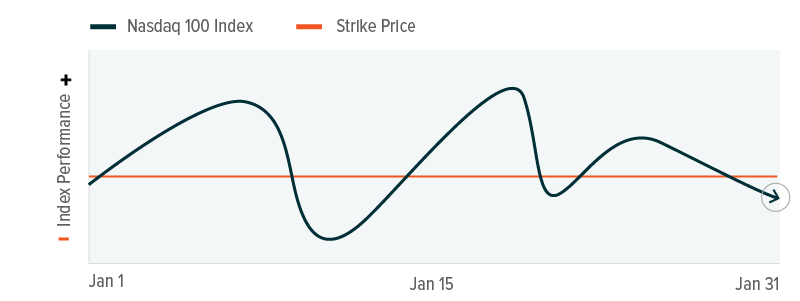
Flat Market: If the index price has not changed at the end of the month, QYLD keeps the money it collected from selling the monthly index call and the Fund still owns the underlying equities.
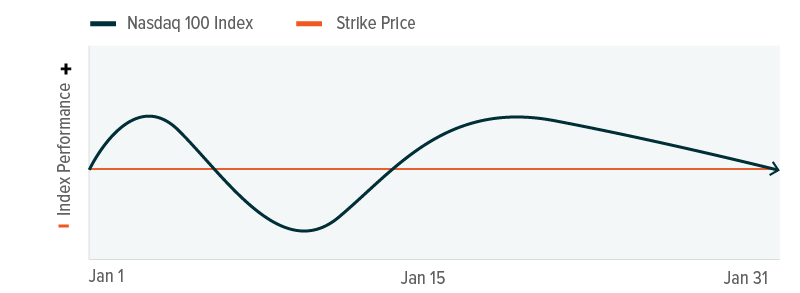
Up market: If the index price rises at the end of the month, potential gain will be limited since the Fund sold a call option at a predefined strike price. As the index rises above the strike price, the Fund still keeps the money collected from selling the monthly index call option, but won’t benefit from the entire increase in the index value.
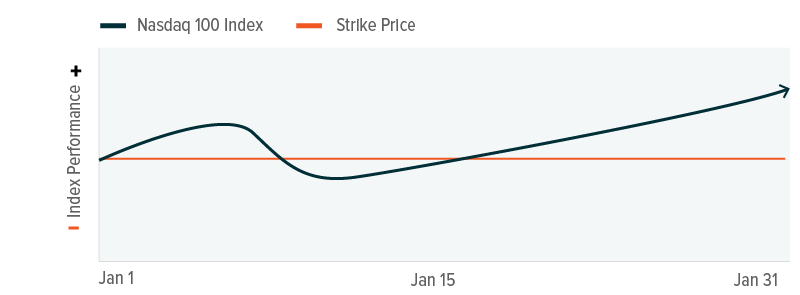
QYLD has historically distributed a high level of income to investors
PREVIOUS 12 MONTH DISTRIBUTIONS

QYLD has provided a Measure of Protection
QYLD performed better than the Nasdaq 100 index during certain downtrends.
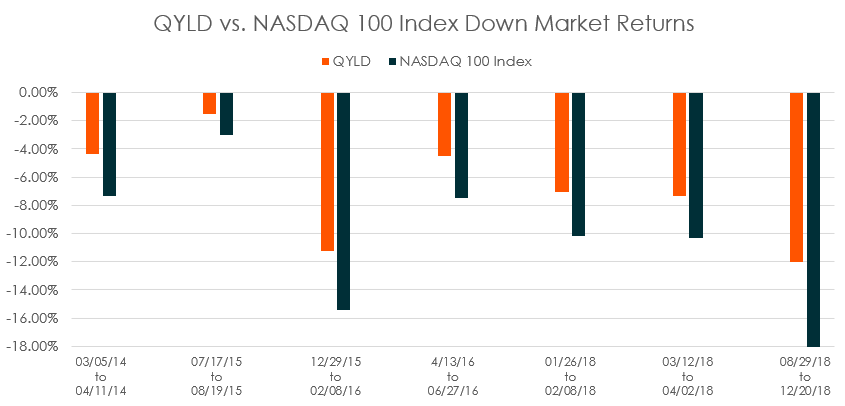
Source: Bloomberg, between March 5, 2014 and December 20, 2018. The rates of return shown are represented by NAV returns not intended to reflect future values of the ETF or the index or future returns on investment in the ETF. Performance data quoted represents past performance and is no guarantee of future results. Current performance may be lower or higher than the performance data quoted. Investment return and principal value will fluctuate so that an investor’s shares, when redeemed, may be worth more or less than the original cost. See QYLD’s Fund Page to find the most recent month- and quarter-end performance numbers. Portions of the distribution may include a return of capital. These do not imply rates for any future distributions. The ETF is not required to make distributions. Nasdaq 100 is QYLD’s broad market benchmark.
Related ETFs
QYLD: The Global X Nasdaq 100 Covered Call ETF follows a “buy-write” (also called a covered call) investment strategy in which the Fund buys a stock or a basket of stocks, and also writes (or sells) call options that correspond to the stock or basket of stocks. The Fund uses this strategy in an attempt to enhance its portfolio’s risk-adjusted returns, reduce its volatility, and generate monthly income from the premiums received from writing the call options.
 Rohan Reddy
Rohan Reddy